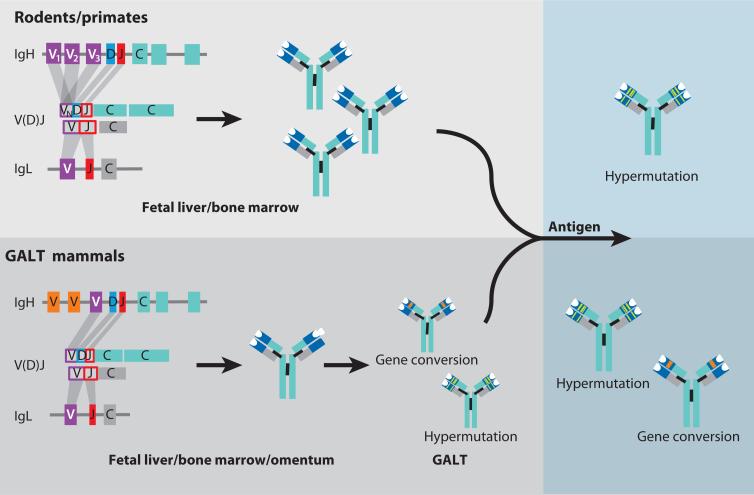Figure 2.
Immunoglobulin (Ig) repertoire diversification in rodents/primates and gut-associated lymphoid tissue (GALT) mammals. In primates and rodents, VH genes from many VH families rearrange to one diversity (D) and one joining (J) segment, which thus leads to the generation of enormous diversity through combinatorial joining and the rearrangement process itself (junctional diversity). In the GALT species, a single or very few variable (V) genes rearrange with D and J segments, generating a poor repertoire that is further modified and amplified in the GALT (e.g., the ileum Peyer's patches in sheep and the appendix in rabbit) in a nonantigen-dependent process. After antigen encounter and as a secondary response, the mammalian repertoire is diversified by somatic hypermutation (SHM) in rodents and primates and SHM and gene conversion in GALT mammals. Abbreviation: C, constant region.

